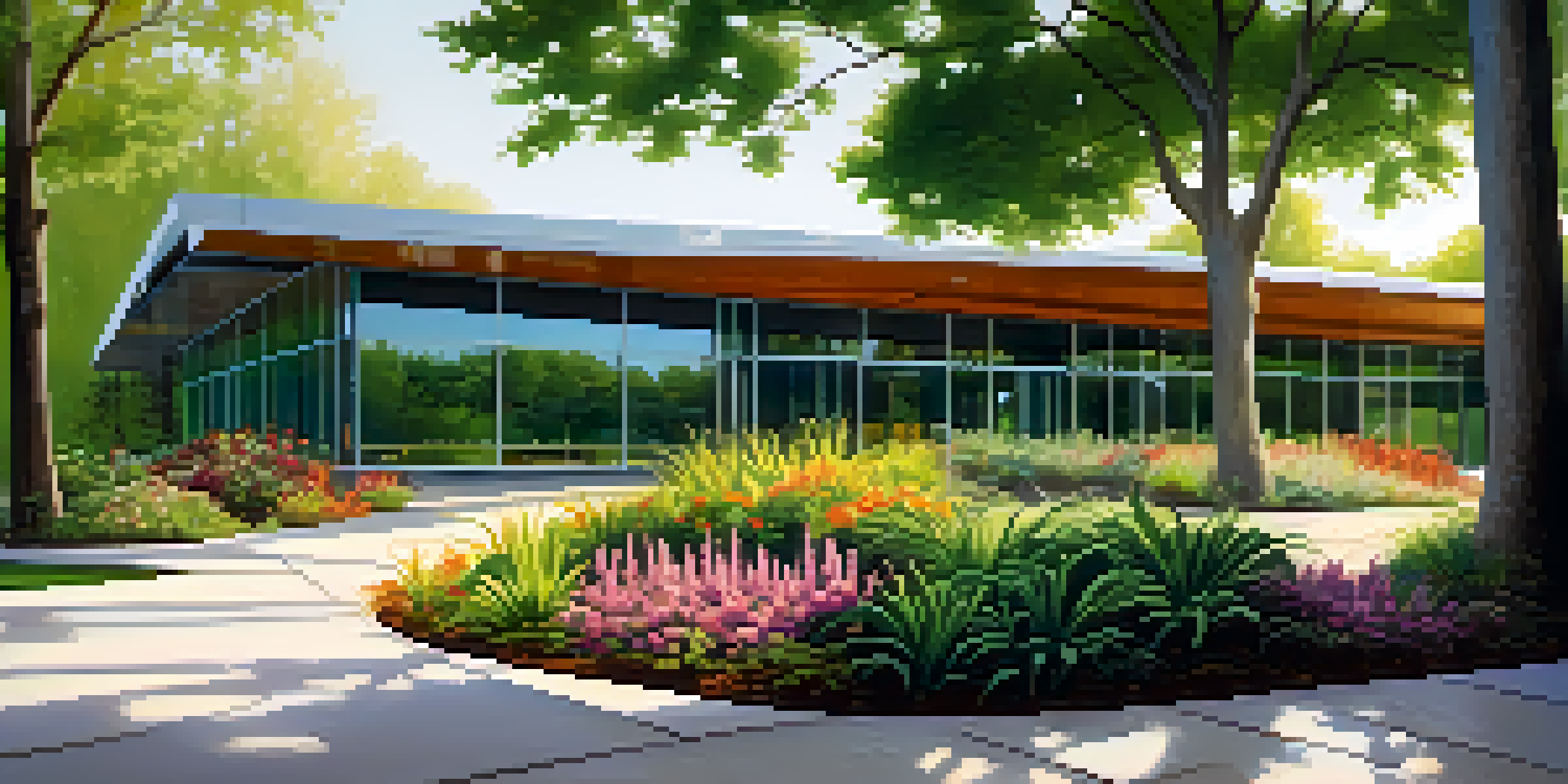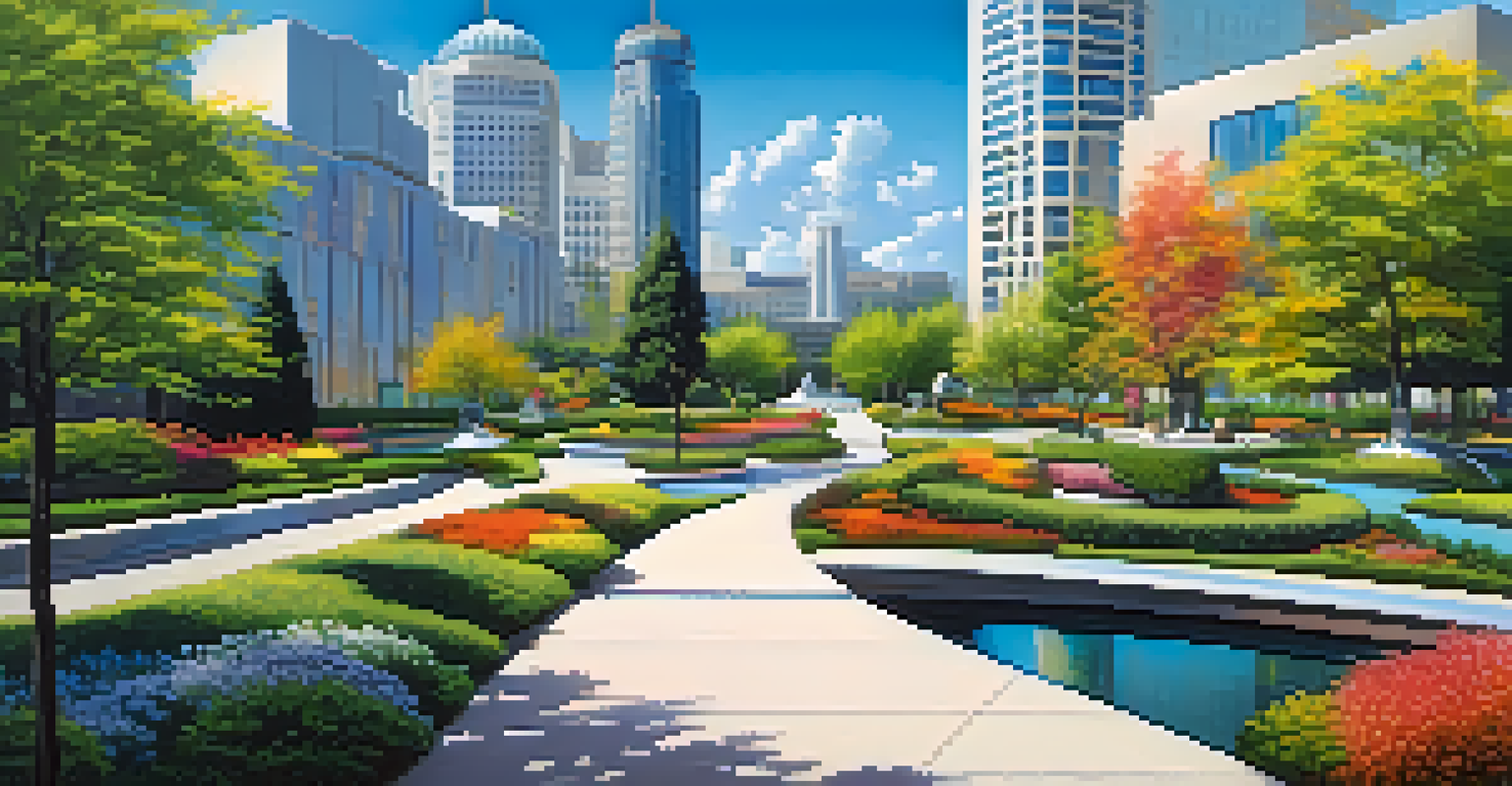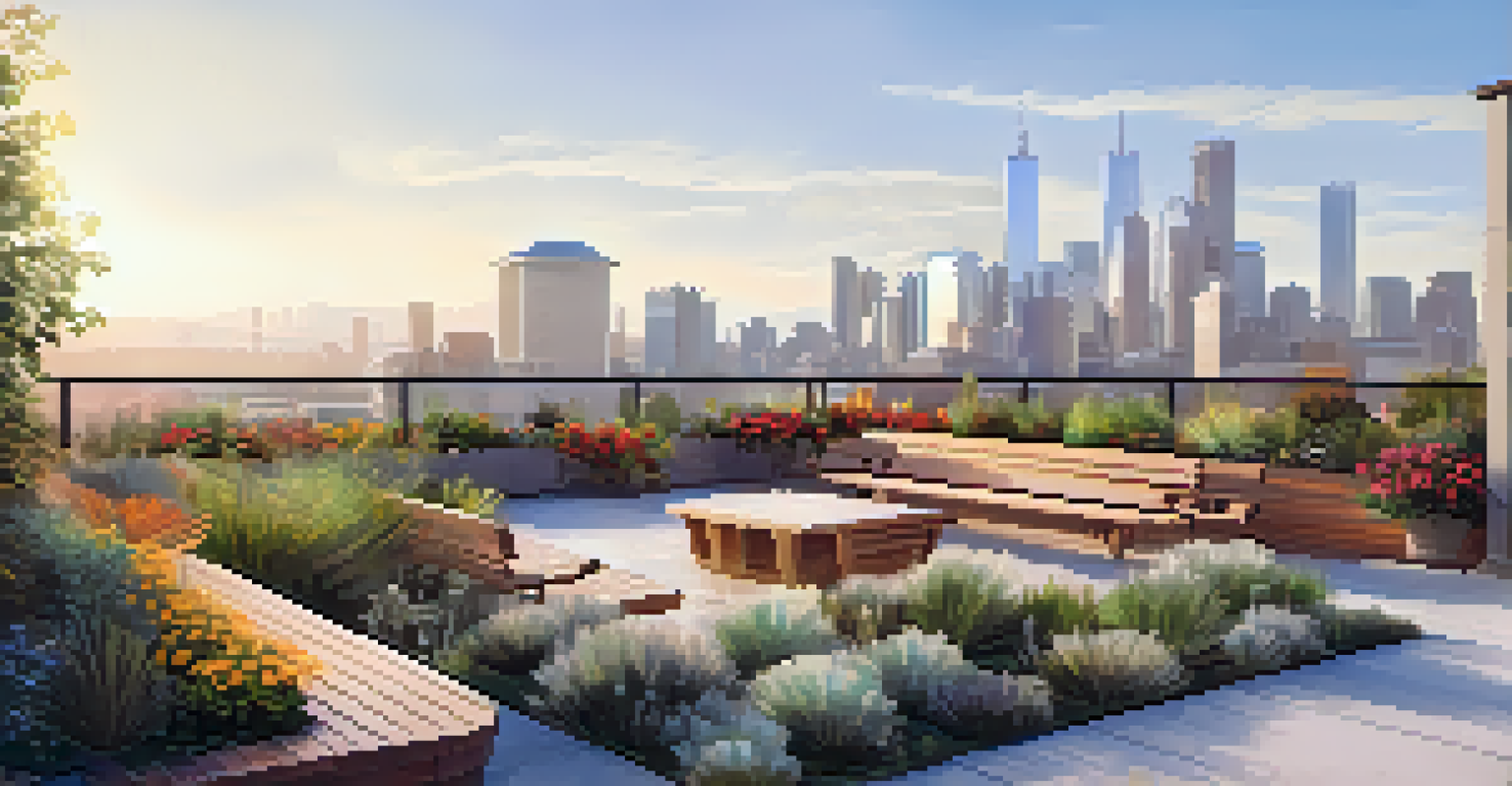The Impact of Landscaping on Architectural Aesthetics

Understanding the Relationship Between Landscaping and Architecture
Landscaping and architecture are two sides of the same coin. While architecture focuses on the structures we inhabit, landscaping adds the natural elements that soften and enhance these designs. This relationship is pivotal; it creates a cohesive environment that ties together man-made and natural forms.
The greatest gift of the garden is the restoration of the five senses.
Think of a building as a canvas and landscaping as the brush strokes that bring it to life. Just as an artist carefully selects colors and textures, architects and landscapers collaborate to create spaces that are visually appealing and functional. This synergy helps to create a sense of place that resonates with its surroundings.
Ultimately, the harmony between architecture and landscaping can influence our perception and experience of a space. A well-landscaped area can make a stark building feel inviting, while poor landscaping may detract from even the most stunning architectural designs.
The Role of Plants in Architectural Aesthetics
Plants play a crucial role in enhancing the beauty of architectural structures. They can soften hard lines, add color, and introduce texture, creating a more inviting atmosphere. For instance, climbing vines can add a touch of elegance to a stark brick wall, making it feel more integrated with the environment.

Moreover, plants can also serve functional purposes. Strategically placed trees can provide shade, reducing energy costs for cooling a building. This combination of aesthetic and functional benefits highlights the importance of intelligent landscaping in architectural design.
Architecture Meets Landscape Harmony
The relationship between landscaping and architecture creates cohesive environments that enhance the overall aesthetic and functionality of spaces.
Incorporating native plants can further enhance the aesthetic appeal while promoting biodiversity. This not only creates a visually pleasing environment but also supports local ecosystems, making the landscape both beautiful and sustainable.
Color Schemes: How Landscaping Complements Architecture
Color is a powerful tool in both landscaping and architecture. The right color scheme can create a striking contrast or a harmonious blend, elevating the overall aesthetic. For example, a modern white building can be beautifully complemented by lush green shrubs, creating a fresh, clean look.
Architecture is the learned game, correct and magnificent, of forms assembled in the light.
Additionally, seasonal changes in plant color can create dynamic visuals throughout the year. Flowering plants in spring, vibrant foliage in autumn, and even the stark beauty of bare trees in winter all contribute to a changing landscape that enhances the architectural presence.
By thoughtfully selecting colors in landscaping, architects can create a dialogue between the building and its surroundings. This dialogue not only enhances visual appeal but also evokes different emotions and atmospheres throughout the seasons.
Creating Focal Points: The Art of Landscape Design
Focal points are essential in both architecture and landscaping, guiding the viewer's attention and creating visual interest. A well-placed sculpture or water feature can draw the eye and serve as a complement to an architectural masterpiece. This interplay creates a more engaging experience for anyone who encounters the space.
Landscaping can also highlight architectural features, such as entranceways or balconies, making them more prominent. For instance, a pathway lined with colorful flowers can lead visitors to a grand entrance, enhancing the overall appeal of the building.
Plants Enhance Architectural Beauty
Plants not only beautify structures by softening hard lines but also provide functional benefits like shade and energy reduction.
The strategic placement of plants, structures, and art can transform an ordinary space into a captivating one. By creating focal points, landscapers and architects collaborate to craft environments that are not just functional but also visually stunning.
Sustainability in Landscaping and Architecture
Sustainable landscaping practices are increasingly being integrated into architectural designs. This trend not only enhances aesthetics but also promotes environmental stewardship. For example, using drought-resistant plants can create beautiful landscapes that require less water, contributing to a more sustainable ecosystem.
Architects are also incorporating features such as green roofs and living walls, which blend architecture with landscaping. These elements provide insulation, reduce urban heat, and improve air quality, demonstrating how landscaping can positively impact both aesthetics and sustainability.
By prioritizing sustainability in both landscaping and architecture, we can create spaces that are not only beautiful but also responsible. This holistic approach ensures that our built environments work in harmony with nature.
The Influence of Local Climate on Landscape Design
Local climate plays a significant role in shaping landscaping choices, which in turn affects architectural aesthetics. For example, a building in a tropical climate may feature lush gardens and water elements, creating a vibrant and inviting environment. In contrast, a structure in a desert area might incorporate xeriscaping to conserve water and create a visually appealing landscape.
Understanding the local climate helps architects and landscapers select appropriate plants and design elements that thrive in those conditions. This not only enhances the beauty of the structure but also ensures the longevity of the landscaping.
Sustainable Design Benefits All
Integrating sustainable landscaping practices into architectural designs promotes environmental stewardship while enhancing visual appeal.
Additionally, climate-responsive landscaping can mitigate environmental impact. By choosing plants that are well-suited to the area, we can create sustainable landscapes that contribute positively to the architectural experience.
Case Studies: Successful Integrations of Landscaping and Architecture
Several renowned architectural projects exemplify the successful integration of landscaping and architecture. For instance, the High Line in New York City transforms an old railway into a lush public park, seamlessly blending nature with urban structures. This project illustrates how thoughtful landscaping can revitalize a space and enhance its architectural context.
Another example is the Gardens by the Bay in Singapore, where futuristic structures coexist with natural landscapes. The integration of unique plants and artistic elements creates a stunning visual experience that showcases the potential of landscaping to elevate architecture.

These case studies highlight the importance of collaboration between landscape architects and traditional architects. By working together, they can create environments that are not only aesthetically pleasing but also enrich the user experience.